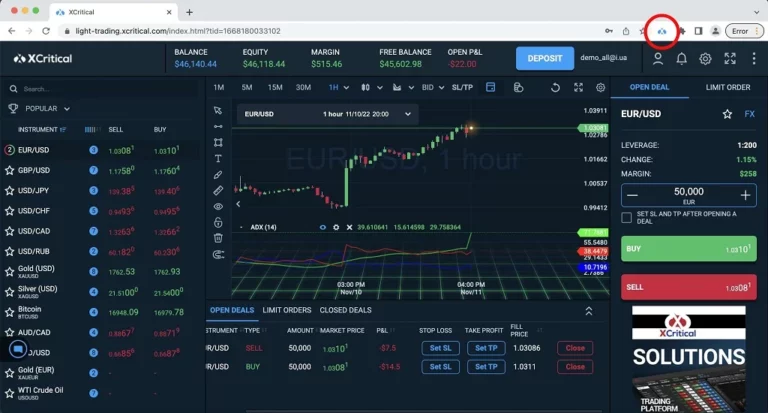Cryptocurrency Volatility Meter by MarketMilk
Content
Another relevant factor contributing to the popularity of cryptocurrencies is their growing acceptance and use as a form of payment by merchants and businesses in less-developed countries where only some have access to a traditional bank account. However, beyond those premises, the cryptocurrency market is still relatively immature and subjected to substantial uncertainty and sudden failures. In that regard, the cryptocurrency market historically showed high volatility traits (Bouri et al. 2019, 2020a, b) and potential for significant returns, resulting in being attractive https://www.xcritical.com/ for retail investors. Therefore, despite its growing popularity, the cryptocurrency market, if viewed in the context of price versus more mature asset classes, is notoriously unstable, with frequent and substantial fluctuations in value.
Open your account in10 minutes or less
Bitcoin, trading above $20,000 at the time of this writing, exceeded $50,000 for two brief periods in 2021—and fell almost as low as $30,000 in between. Other high-profile cryptocurrencies, such as Ethereum Constant function market maker and Dogecoin, have experienced similarly dramatic highs and lows. Such an effect is particularly evident in the traded volume and the number of active participants in the space (Bouri et al. 2019; Bains et al. 2022). An additional couple of tested model specifications disentangle the most recent information into the continuous and the jump part of the volatility. We obtain two variants, where the second one also decomposes the jump part to account for its signed effect.

Refine your short-term trading strategies
Our analysis aims to understand the cryptocurrency’s volatility dynamics that emerge from high-frequency data due to different market participants since retail investors usually operate crypto volatility trading on daily if not lower frequencies (Auer et al., 2022). Previous works (Jha and Baur, 2020; Ftiti et al., 2021) have already studied the volatility dynamics of cryptocurrency at a frequency higher than daily. However, these analyses are restricted to a single or few cryptocurrencies, and the insights are detected and described only within the realm of the crypto ecosystem. We extend the analysis in three directions to further elaborate on these aspects. First, we consider historical high-frequency cryptocurrency data represented by a large cross-section of coins and tokens to understand the volatility dynamics of the global cryptocurrency market.
What Is the best volatility indicator for crypto Markets?
There was a time where it would have been foolish to part with even the smallest fraction of a Bitcoin was foolish as its value would increase daily. IBM uses Stellar protocol Stronghold USD stablecoin as an intermediary currency, to enable financial offices to settle cross-border payments within seconds. The attractiveness of this system is its simplicity, transparency, single fee for different currencies, security and limitless possibilities regardless of the amount, asset type and currency destination. However, there are many different ways that companies and cryptocurrencies are looking to remain stable to provide a functional and viable service, as well as to aid in their adoption as a token that can be of worthwhile and valuable. Speculative investing is over, and instead, people are looking for functionality and use cases for cryptocurrency. This has spawned the ‘stable coin’ movement which has spread to Wall Street and JP Morgan Chase.
Appendix A Additional Estimation Results

Such results potentially signal a stronger influence of the jump part to explain future cryptocurrency volatility. The econometrics literature has shown how high-frequency price data can improve the estimation and predictability of the volatility for a cross-section of equities (Patton and Sheppard, 2015; Bollerslev, Li and Zhao, 2020). These studies leverage the heterogeneous autoregressive (HAR) model proposed by Corsi (2009) and elaborate on its variants to account for the direction of the volatility movements. All the models use realized variance estimators and their variants obtained from high-frequency data.
- Using Bitcoin (BTC) as an example below, you can see BTC has witnessed over eight 50% corrections in its 15 years of existence.
- Once it hits the upside, traders may lose their resistance to buy and rapidly invest.
- Traditional foreign exchange markets stay open around the clock, Monday through Friday, but close on weekends, and this is further complicated by time zones and different holidays globally.
- Government regulations or policy changes can affect how cryptocurrency can be used and is viewed, leading to increased volatility.
- As such, it is a reasonably stable commodity, as far as price, demand, and supply go.
Institutional adoption, technological advancements, regulatory frameworks, and project-specific developments all play critical roles in shaping the stability and performance of cryptocurrencies. Understanding these dynamics is vital for navigating the unpredictable crypto landscape and making informed investment decisions. The crypto market is not comprehensively nor clearly regulated by any government bodies, globally, like traditional financial markets are. The unique digital and decentralised characteristics of cryptocurrencies present major challenges for regulators globally. The need for regulation to protect consumers to legitimise the industry has long been called for by prominent figures participating in the industry, but lawmakers have been slow to answer the calls.
It’s a speculative asset, which means it has a limited history and price fluctuations. Still, crypto is an emerging market that’s creating a space for itself in the world, with countries legalizing it and companies integrating blockchain technology into their payment processes. The significant volatility in cryptocurrencies is likely the factor that has drawn many investors and rapidly driven prices to high levels. “When trading cryptocurrencies, volatility isn’t something that you should let go unnoticed. Once you’ve mastered these indicators, you’ll be able to take advantage of strong price movements to obtain significantly higher percentage returns on your trades.” Understand how speculative trading, political events, and regulatory changes impact cryptocurrency liquidity and market stability.

Lastly, the period covered by our dataset, from 2020 to 2022, allows us to appreciate the significance of our selected volatility drives under the latest bullish and bearish market regimes that characterize the cryptocurrency market. Such a period has been crucial for developing the cryptocurrency industry, which welcomed more institutional investors among the active participants and experienced astounding growth followed by sudden drawdowns. Previous works focus on the analysis of periods pre-2020 when the market dynamics and cryptocurrency adoption were less developed than in the subsequent years. We consider combining these three elements essential to disentangle the peculiar and common traits of cryptocurrencies as a whole with respect to more traditional assets.
Nothing contained herein shall constitute a solicitation, recommendation, endorsement, or offer by Crypto.com to invest, buy, or sell any coins, tokens, or other crypto assets. Returns on the buying and selling of crypto assets may be subject to tax, including capital gains tax, in your jurisdiction. Through thorough research, risk management, and disciplined trading strategies, traders can navigate market swings and minimise potential losses. Technical analysis tools can assist in predicting and managing volatility, while diversification and portfolio management strategies can mitigate risk and maximise returns.
The cryptocurrency appeared to act as a financial safe haven, and like gold seemed to be an attractive alternative to cash. Securities and Exchange Commission that can greatly affect the volatility of cryptocurrencies — especially if there are fears that the ability to mine or own Bitcoin may be curtailed. Volatility in most conventional assets is measured by the CBOE Volatility Index, also called VIX. But in the context of BTC, the Bitcoin Volatility Index tracks the volatility of the popular cryptocurrency. Commission-free trading refers to $0 commissions charged on trades of US listed registered securities placed during the US Markets Regular Trading Hours in self-directed brokerage accounts offered by Public Investing. Keep in mind that other fees such as regulatory fees, Premium subscription fees, commissions on trades during extended trading hours, wire transfer fees, and paper statement fees may apply to your brokerage account.
Section 4 includes the results of the empirical analysis, from the model estimation using panel data to the robustness check by repeatedly fitting the same model specification over a different time window. In addition, we carry out the individual estimation of the same model for every entity in the cryptocurrency cross-section to disentangle the aggregate results and validate them. Then Section 6 discusses the key findings and the implications of our results for the cryptocurrency ecosystem and Section 7 provides the takeaways from the volatility analysis. This section evaluates the implications of our findings on the cryptocurrency market’s unique volatility landscape, drawing on high-frequency volatility estimators. The econometrics analysis aims to offer valuable insights for market participants and regulators, enriching the understanding of this emerging asset class’s volatility patterns and stakeholder roles.
Additionally, if you mine a Bitcoin, you are required to report it as income based on the coin’s market value on the date you receive it. After the hype died down and investors realized the ETF was linked to Bitcoin through futures contracts traded on the commodities market, prices dropped back down to around $50,000. It’s not uncommon to hear an opinion from someone heavily invested in Bitcoin stating that the currency will soon be worth hundreds of thousands. Others hype newly invented cryptocurrencies to try and take away market share from Bitcoin. However, most of this media attention and publicity serves to influence Bitcoin’s price to benefit the people who hold large numbers of coins. As the most popular cryptocurrency, Bitcoin demand increases because supply is becoming more limited.
Due to limited liquidity, smaller market cap assets are particularly susceptible to the movement caused by whales’ trades and are often more volatile and risky as a result. Bitcoin has only been around for 15 years– a while longer than most crypto assets, so they are still in price discovery. This means that prices will continue to fluctuate as new participants continue to enter the market trying to establish consensus on the fair value of digital assets in the process. All new financial markets take time to settle and be accepted in order to reach maturity – the same holds true for crypto.
The descriptive statistics show a higher order of magnitude for the cryptocurrency estimators than those related to equities. This effect indeed points to the continuous trading under which cryptocurrencies are subjected due to how the estimator is constructed. However, the difference in scale is also due to the more significant volatility shocks that are known to affect such a market. Wang et al. (2023) explore the FoMo idea specifically on BTC finding positive asymmetric volatility behavior in the Bitcoin market. Huang et al. (2022) detail the contribution of jumps in cryptocurrency price series to the inverse leverage effect.